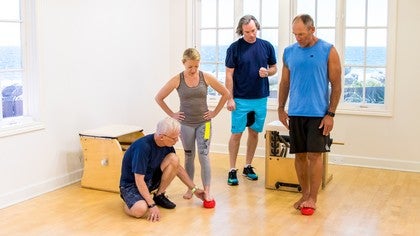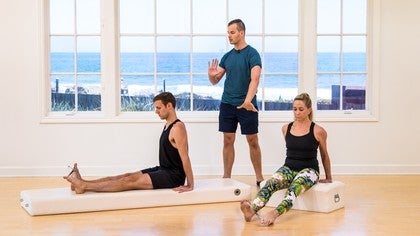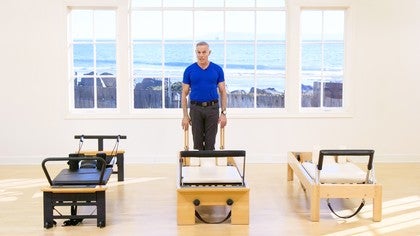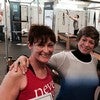Workshop #2794
Pilates for Athletes
Description
In this session Michael Fritzke and Ton Voogt will show you how you can add exercises that are specifically designed for your athletes to your regular repertoire. The exercises are divided in categories so you can easily find what you are looking for. In addition to using them for your athletes, you might even want to use some of the exercises for your other clients!
What You'll Need: Cadillac, Mat, Wunda Chair, Reformer w/Box, Wall, Triadball, Franklin Ball, Knee Pad, Towel, Jump Board, Fitness Ball, Theraband, Magic Circle
About This Video
(Pace N/A)
Oct 28, 2016
(Log In to track)
Workshops: Free Workshops
Comments
Skip to Latest
Great exercises again. Such a great teachers. Happily I followed their certification programm. Learned so much of you guys and still does. X
9 years ago
Thank you Maureen! We hope you will love the rest as well! We do not have a certification program, we do teach this workshop as a 3 hour workshop for numerous organizations. Hope we will see you there!!!!
9 years ago
Ileana! Thank you for your comment and question. For the Rotational Punch on the Reformer we like to place the legs on the outside of the shoulder boxes because you can squeeze the legs into the shoulder boxes and this will help stabilize as it will activate the adductors, which makes it easier to connect to the pelvic floor muscles and the abdominals. If this does not work for you, you can keep the legs on the inside of the shoulder boxes and press the legs out. You will activate the abductors more. Try both and let us know what you like!
9 years ago
Time to ditch the Nike shoes if you are teaching foot fitness
Go barefoot or wear a Vibram five finger shoe
Go barefoot or wear a Vibram five finger shoe
9 years ago
Thank you for this great workshop. Loved the spine and sholder rotation in the reformer, soo deep. I have scoliosis so I felt chalenging to do the left side, that is my short side. I will for sure use this exercises with my clients! Hugs from Monclova, Mexico.
8 years ago
fantastic focus, I would love if you could share more details on reason for side walk squat whilst keeping the ball still?
8 years ago
1-10 of 15
You need to be a subscriber to post a comment.
Please Log In or Create an Account to start your free trial.





















